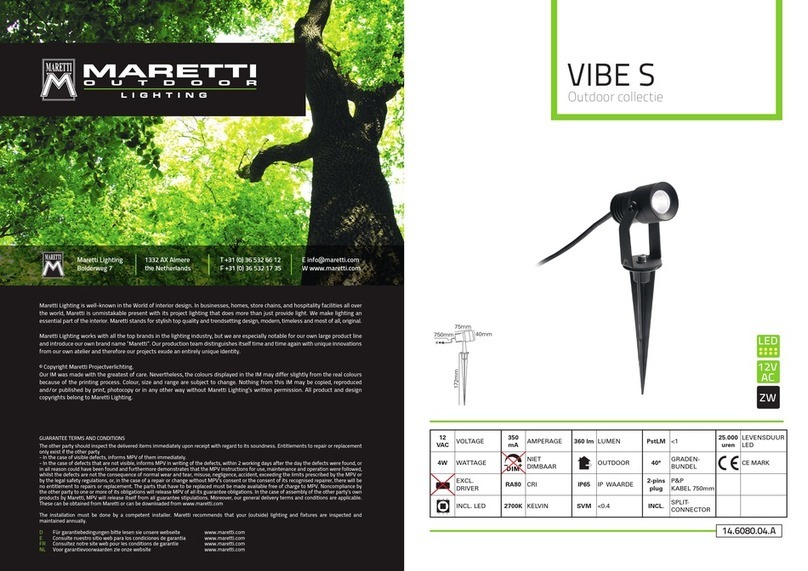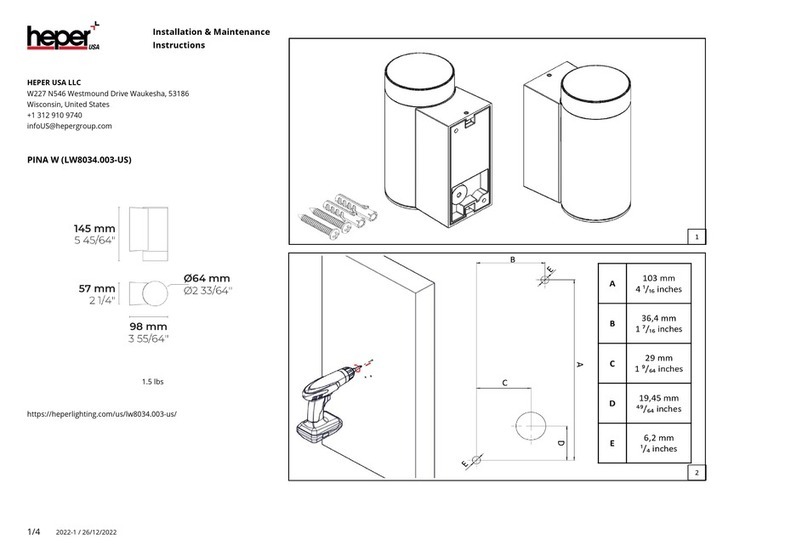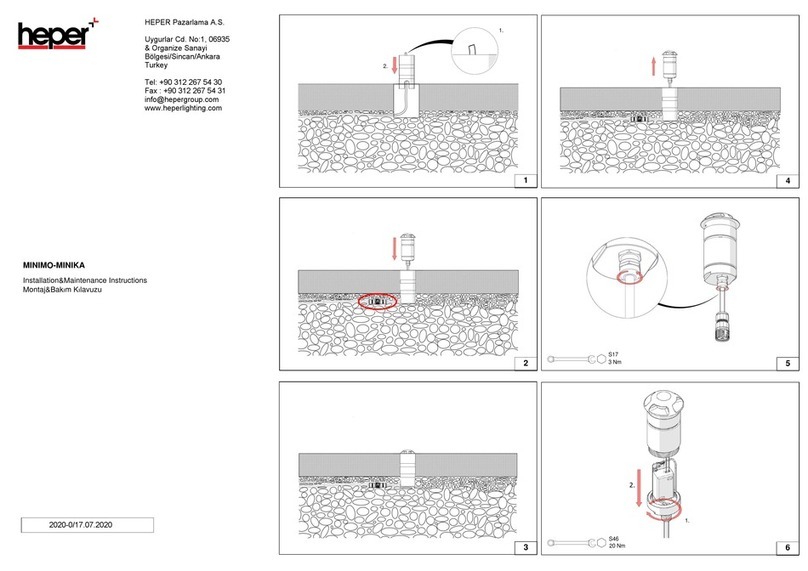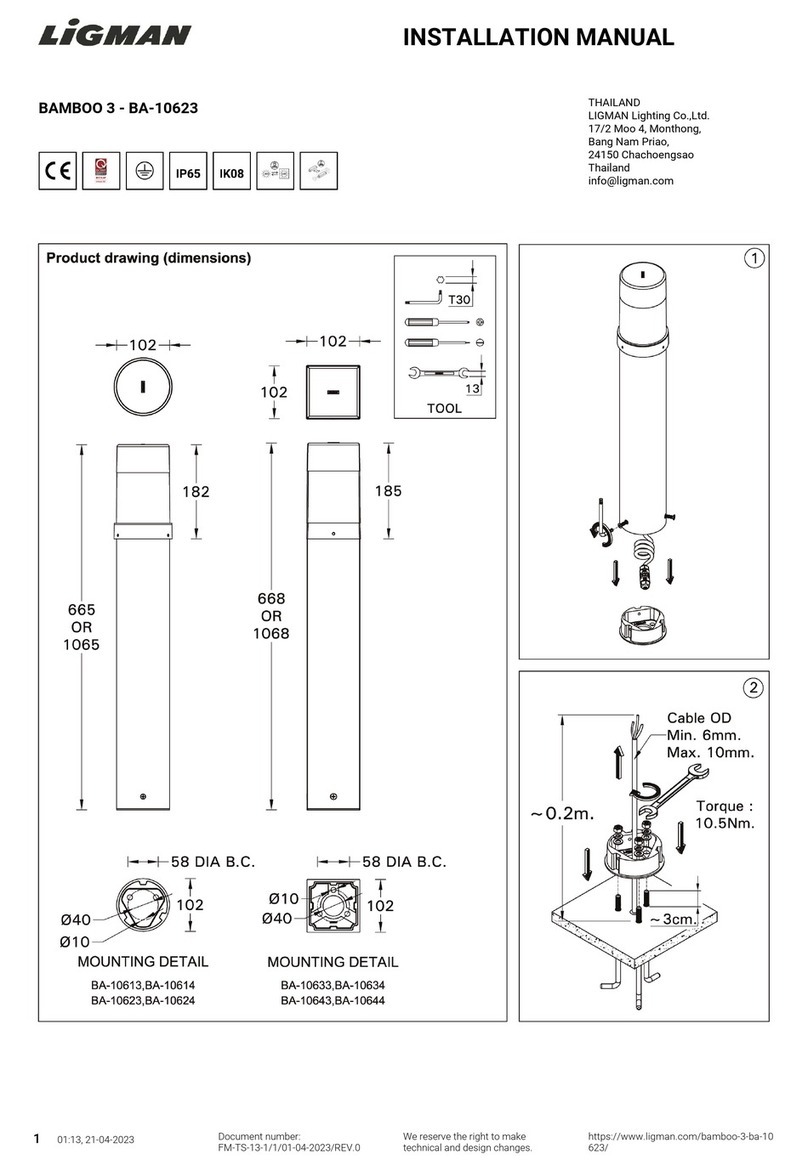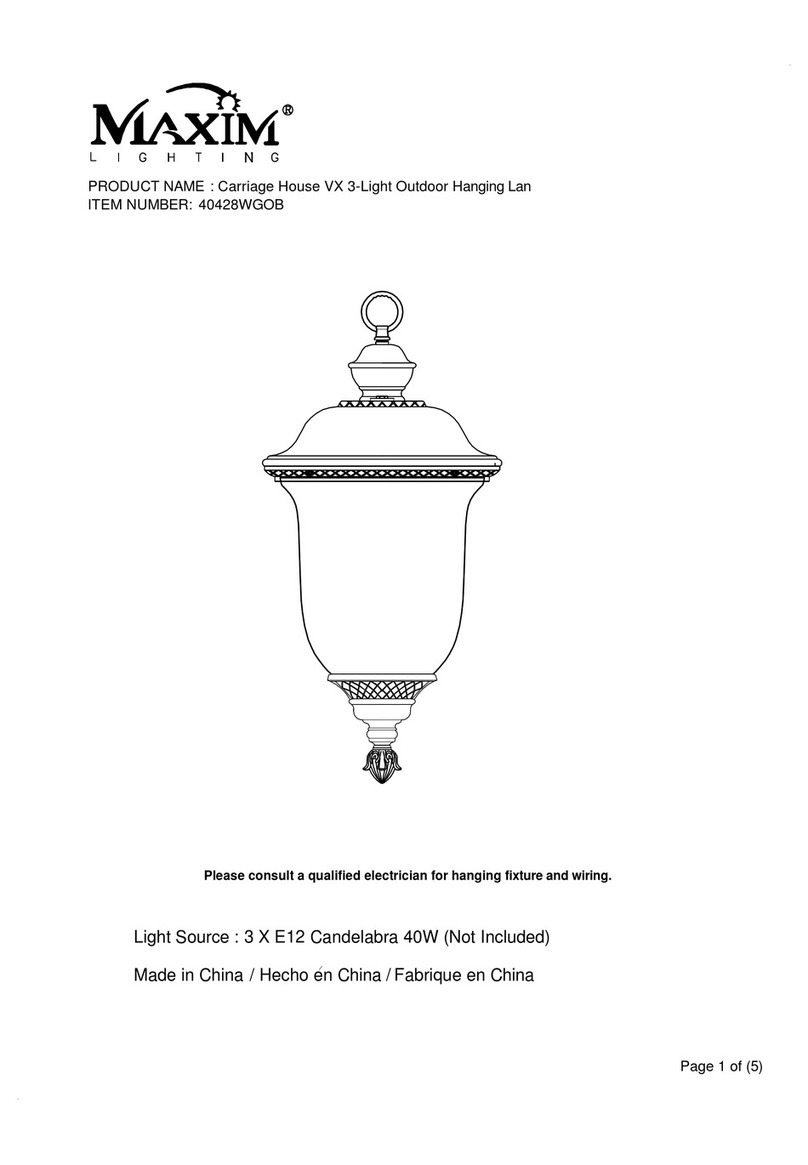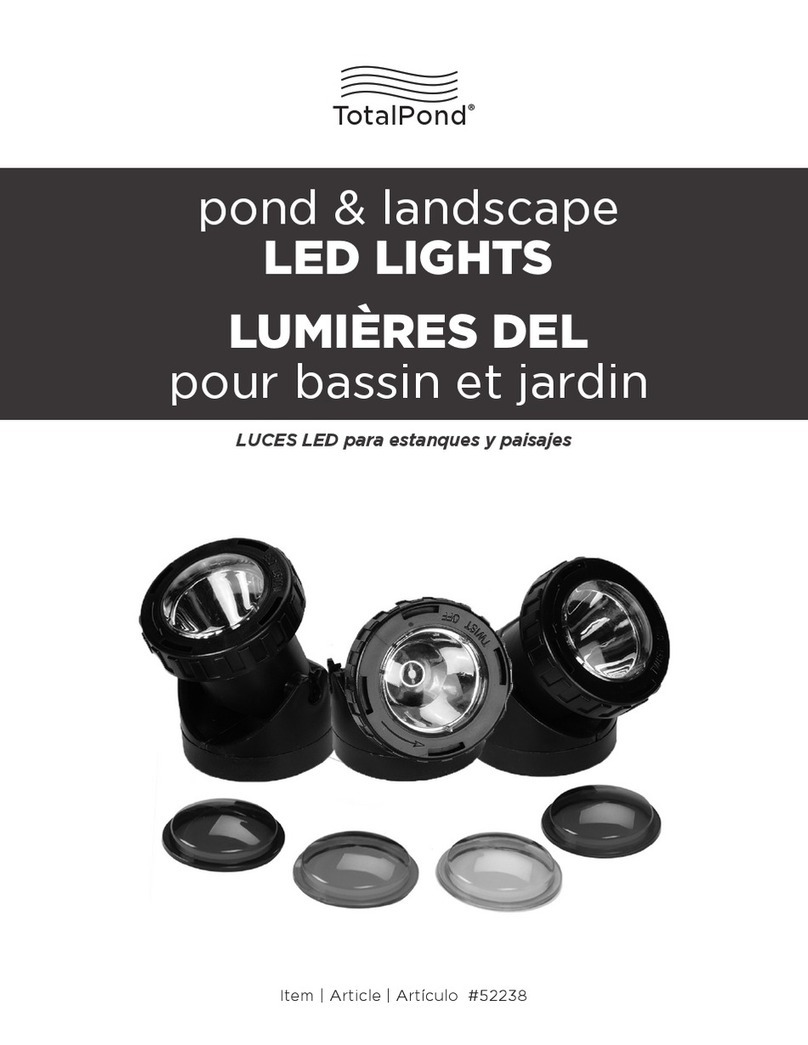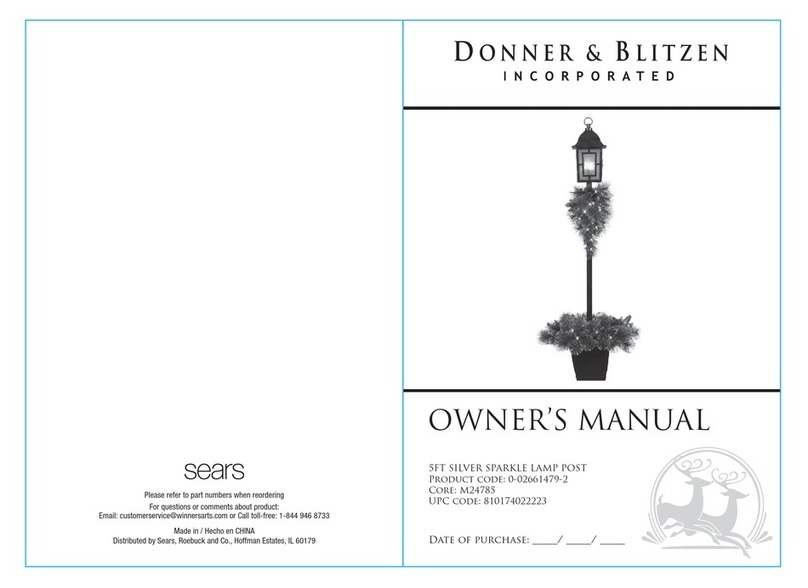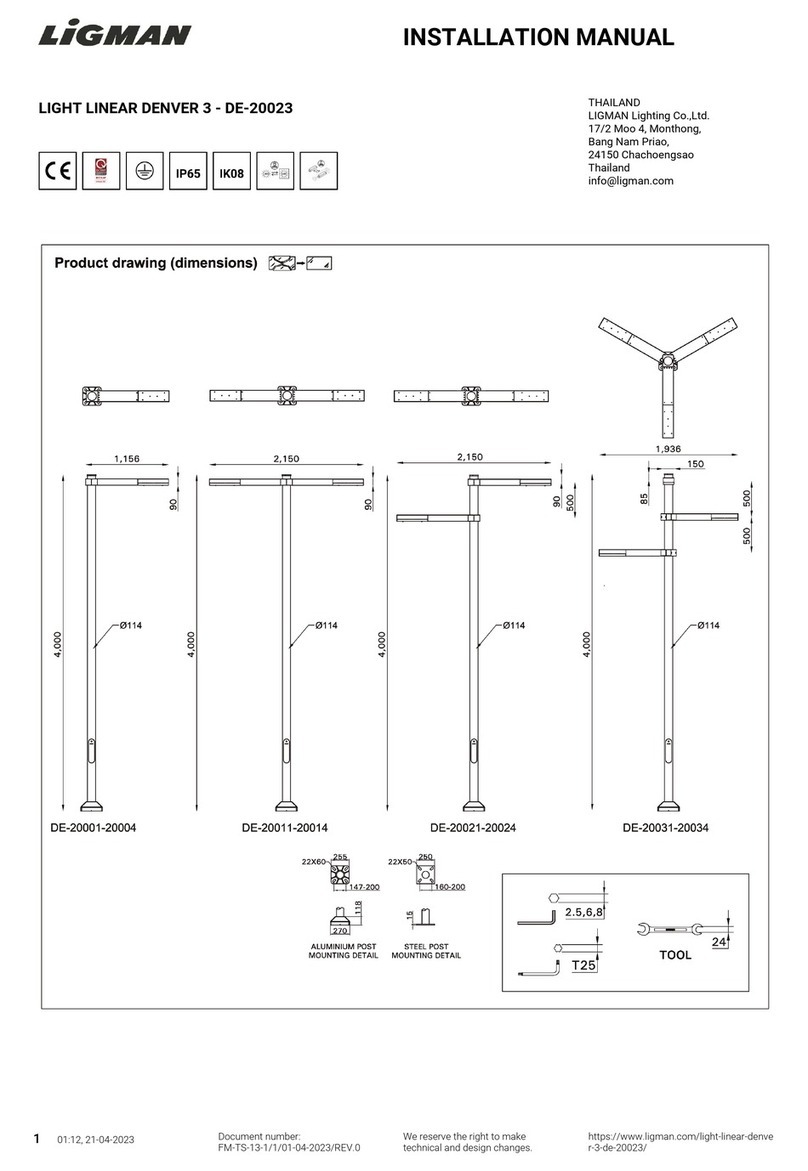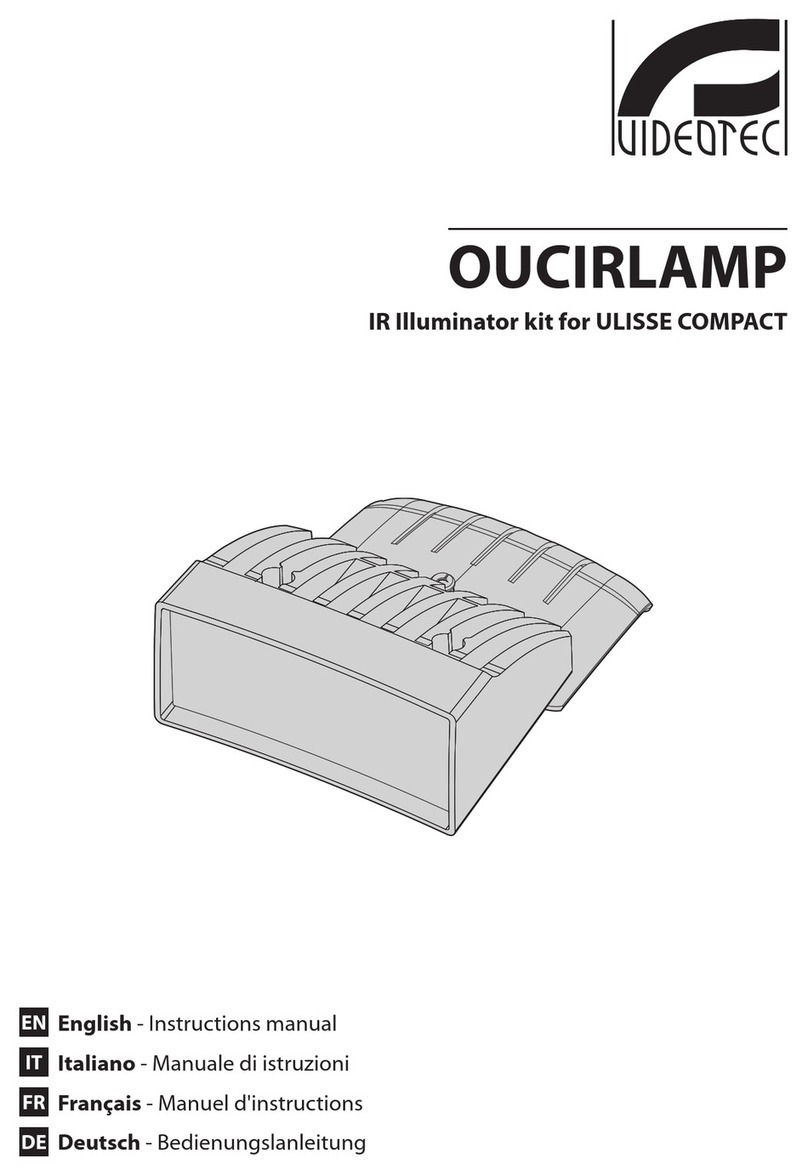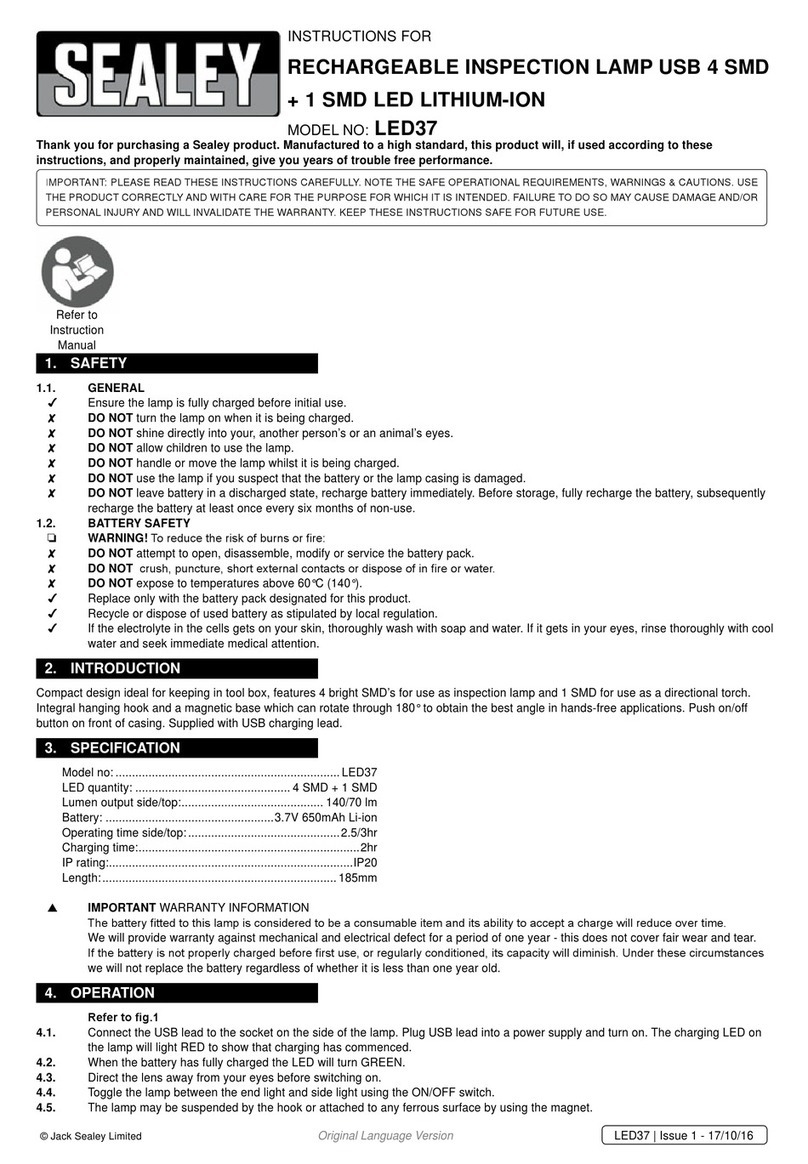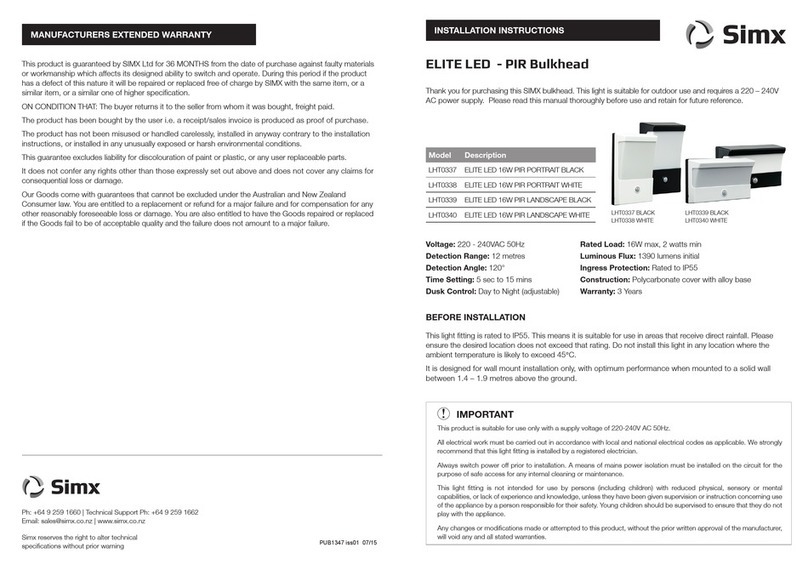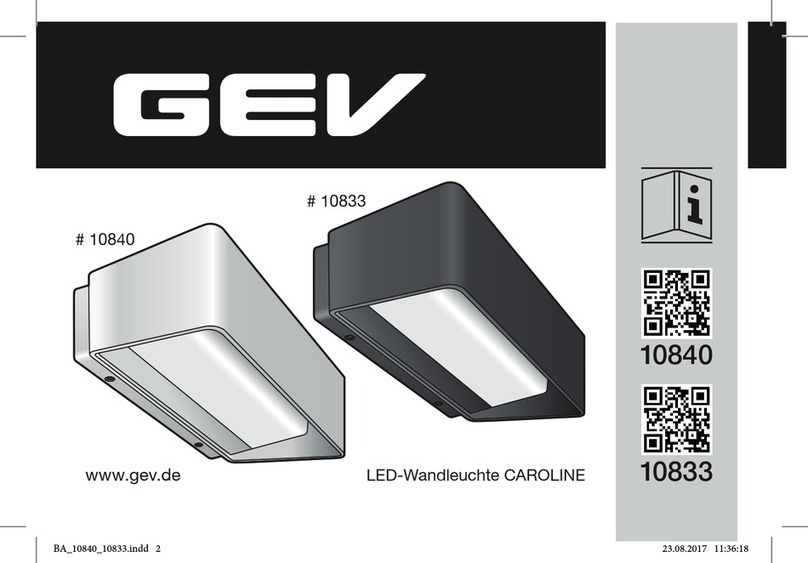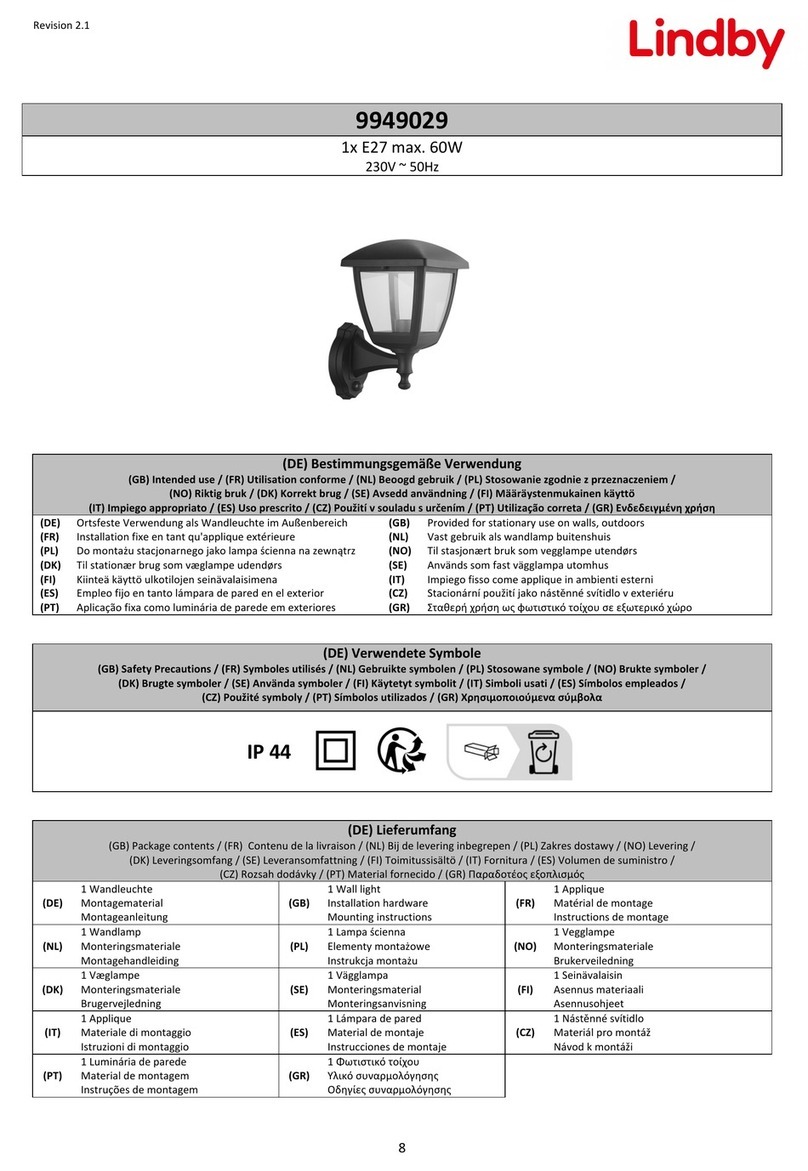7
Infrarotscheinwerfer
DEUTSCH
6
Projecteur infrarouge
FRANÇAIS
d’herbe ou des parois foncées.
5. Certains types d’optiques autoiris
peuvent donner lieu à une mauvaise
définition de l’image lors du passage
entre le jour et la nuit et vice versa.
SPECIFICATIONS
Alimentation:
65/50/20W:
12VAC/VDC
50W: 230VAC
300W:
230VAC
Matériel:
Moulage et moulage mécanique d’alumi-
nium.
Vernissage:
Présentation peinture époxy noir.
Dimensionnement:
65/50/20W:
L 108 X H 124,5 X P 146 mm
300W:
L 217 X H 233 X P 276
Poids:
65/50/20W:
0,9 Kg
300W:
5,3 Kg
Filtres:
Filtre optique de 850nm sur la face avant.
Etancheité: IP65
Connexions:
65/50/20W:
Marron - Alimentation
Bleu – Alimentation
50W, 230VAC:
Marron - Alimentation
Bleu – Alimentation
Jaune/Vert – Masse
300W:
Marron - Alimentation
Bleu – Alimentation
Jaune/Vert – Masse
BESCHREIBUNG
Die Infrarotscheinwerfer sind ganz aus
Aluminium und mit Epoxypoliester schwarz
lackiert. Sie sichern eine sehr gute Schutz
und eine Umweltanpassungsfähigkeit. Die
infrarote Strahlung hat einem
Spektralbereich von 850 m. Die Schrauben
sind aus rostfreiem Stahl. Die IR 300W mon-
tieren “O ring” Dichtungen (FP75) und IR
20W, 50W und 65W Preß-Dichtungen aus
VMQ; alle beide erfüllen eine IP65-
Schutzart.
INSTALLATION
Die elektrische Installation darf nur
vom qualifizierten Fachpersonal
und unter Befolgung der geltenden
Richtlinien durchgeführt werden. Vor
Durchführung der Arbeiten muß man
sich unbedingt vergewissern, daß die
Stromspannung unterbrochen wurde.
Die Infrarot- Beleuchtung erfordert nur weni-
ge Wartungsarbeiten. Die Kühlrippen gestat-
ten eine optimale Dissipation der von der
Lampe erzeugten Wärme und sorgen somit
für eine beträchtliche Verlängerung der
Lebensdauer dieser.
Die Infrarot- Beleuchtungspalette besteht aus
vier Lampenklassen (20W, 50W, 65W,
300W), die sich wiederum in drei
Lichtbündeltypen aufteilen: spot, flood, wide-
flood (IR 50W, 230V, nur flood).
Die 300W- Beleuchtungen werden komplett
und installationsbereit geliefert (Abb. 3).
Bei anderen Spots (Abb.1 und 2) muß die
Lampe in den entsprechenden Verschluß ein-
geführt werden (für IR 300W, 230V,
Bajonettverschluß). Um diesen Arbeitsgang
durchzuführen, reicht es aus, wenn man die
Vorderseite durch die in Abbildung 1 Punkt
1 angezeigten Schrauben abmontiert und
die Kontakte des Beleuchtungskörpers in die
entsprechenden Sitze der Lampenfassung
einfügt (Abb. 2 Punkt 1). Nach Beendigung
m
dieses Arbeitsgangs die Vorderseite wieder
mit den Schrauben befestigen, wobei darauf
zu achten ist, daß die Dichtung korrekt mon-
tiert wird (Punkt 2).
Die Spots können an die Wand bzw. an
jede Art von stabiler Halterung befestigt wer-
den. Für die Montage den Bügel der
Beleuchtung durch eine dicke M8-Schraube
(mind. 6 mm Durchmesser) befestigen
(Abb. 1 Punkt 2). Die Neigung des
Lichtbündels durch die seitlichen Schrauben
(Abbildung 1 Punkt 3) regulieren; nach
Beendigung des Arbeitsgangs die seitlichen
Befestigungsschrauben wieder anziehen.
Die Massekabelverbindung für IR 50W,
230V, muß nicht wieder bewegt werden.
Falls kam das, die Leistung ausschalten und
das Kabel in seinem Sitz, beim Verwendung
der gelieferten Schraube oder eine gleich-
wertige M3 x 8mm, positionieren.
Bei der Installation sollten folgende Hinweise
auf jeden Fall beachtet werden:
1. Das Infrarotlicht kann nicht mit
bloßem Auge gesehen werden, kann
aber schwere Beschädigungen der
Netzhaut verursachen, wenn man sie
zu lange und zu nahe diesem Licht
aussetzt; daher sollten die Spots nur
bei Bedarf eingeschaltet werden.
2. Der Spotkörper dient auch als
Wärmeableiter und kann daher sehr
hohe Temperaturen erreichen. Aus
diesem Grund sollte er in
unzugänglichen Stellen installiert
werden.
3. Farbkameras sind normalerweise
unempfindlich gegenüber
Infrarotstrahlen; daher sollte man
Schwarzweißkameras
benutzen.
4. Die Leistungsfähigkeit des Spots hängt
in hohem Maße vom Ort, in dem
dieser eingesetzt wird, bei internen
Installationen und mit weißen
Wänden nimmt diese zu, bei
externen Installationen mit
IR20 spot
IR20 flood
IR20 wide
IR50 spot
IR50 flood
IR50 wide
IR50 flood
IR65 spot
IR65 flood
IR65 wide
IR300 spot
IR300 flood
IR300 wide
10°
40°
60
10°
40°
60°
40°
10°
40°
60°
8°
10°
20°
10
7
5
12
9
7
9
15
12
9
65
35
20
10°
40°
60
10°
40°
60°
40°
10°
40°
60°
10°
23°
40°
DISTANCE
(mètres)
FAISCEAU
VERTICAL
12
12
12
12
12
12
230
12
12
12
230
230
230
FAISCEAU
HORIZONTAL
MODELE VAC

